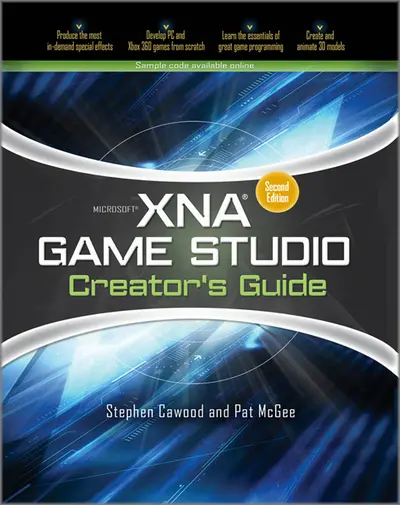My Account Details

ISBN10: 0071614079 | ISBN13: 9780071614078

Step 1 . Download Adobe Digital Editions to your PC or Mac desktop/laptop.
Step 2. Register and authorize your Adobe ID (optional). To access your eBook on multiple devices, first create an Adobe ID at account.adobe.com. Then, open Adobe Digital Editions, go to the Help menu, and select "Authorize Computer" to link your Adobe ID.
Step 3. Open Your eBook. Use Adobe Digital Editions to open the file. If the eBook doesn’t open, contact customer service for assistance.
Bring your PC, Zune, and Xbox gaming visions to life with Microsoft XNA Game Studio
Develop complete 2D and 3D games with step-by-step hands-on instruction, advice, and tips from two industry professionals. Fully revised to cover the latest features, Microsoft XNA Game Studio Creator's Guide, Second Edition lays out the essentials of game programming alongside exciting examples and C# code samples. Learn how to create 3D models, virtual worlds, and add stunning animation. You'll also discover how to incorporate 3D audio into your projects and handle PC and game controller input devices.
- Create, draw, and update XNA game windows and 3D objects
- Add dazzling animation and fluid character motion
- Render photorealistic terrains, landscapes, skies, and horizons
- Program custom lighting and shading effects using HLSL
- Integrate sound effects, game dashboards, and stat tracking
- Work with game cameras, keyframes, sprites, and loaders
- Design natural collision detection, ballistics, and particle effects
- Develop, import, and control Quake II models using MilkShape
Chapter 1: Set up an XNA Development Environment
Chapter 2: XNA Basics
Chapter 3. Introduction to 2D Games
Chapter 4: Introduction to 3D Graphics Programming
Chapter 5 Animation Introduction
Chapter 6: Character Movement
Chapter 7: Texturing Your Game World
Chapter 8: Adding Skies and Horizons to your Levels
Chapter 9. Index Buffers
Chapter 10: Enhanced Image Effects
Chapter 11: Score Tracking and Game Stats
Chapter 12: Creating and Loading 3D Models
Chapter 13: Vectors
Chapter 14: Matrices
Chapter 15: Building a Graphics Engine Camera
Chapter 16: Collision Detection
Chapter 17: Ballistics
Chapter 18: Particle Effects
Chapter 19: Keyframe Animations
Chapter 20: Lighting
Chapter 21: Input Devices
Chapter 22. Content Pipeline
Chapter 23. Animated Models
Chapter 24. AddingAudio to Your Game
Chapter 25. Terrain with Height Detection
Chapter 26. Multi-player Gaming
Chapter 27. Networked Gaming
Chapter 23: The Xbox Creators’ Club
Appendix: C# Quick Reference
Need support? We're here to help - Get real-world support and resources every step of the way.